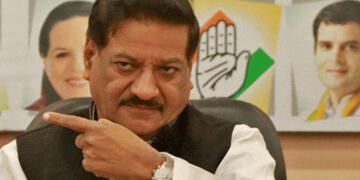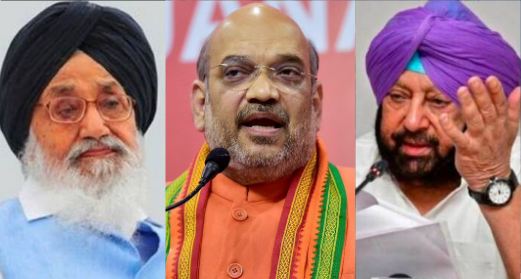Punjab, the state that was the granary of India in the 1970s and 80s, has witnessed immense changes in the last few decades. Although the state continues to be one of the richest in the country, incomes have stagnated and the disparity has risen. Misgovernance and corruption by successive Congress and Shiromani Akali Dal governments of Punjab have shaken the confidence of the people in the state machinery, and this has led to many things – right from AAP emerging as the second-largest party in 2017 assembly elections to protests by Khalistani elements over the farm bills intended to bring agricultural reforms. But can BJP capitalise on the same? Let’s discuss.
If BJP fields a Dalit Sikh as the CM face, Dalit Sikhs who constitute 31 per cent of Punjab’s electorate and Hindus who comprise 38 per cent, will rally behind the party, forming an invincible coalition.
For decades, especially since Punjab was created as a separate state in 1966, the politics of the state has revolved around Shiromani Akali Dal and Congress with the former being supported by Jat Sikhs. Jat Sikhs went for a more radical line in the 70s, 80s, and early 90s and supported the Khalistan movement but ultimately made peace with the state and rallied behind Akali Dal in 1997.
Prakash Singh Badal, who became the CM of Punjab in 1997, made SAD a family fiefdom from the political arm of Sikhism. In the 2002 assembly election, Hindus and lower caste Sikhs, who felt alienated under Jat Sikh-dominated SAD, voted for the Congress but the party made Amarinder Singh, a Jat Sikh, CM.
But SAD again came to power in 2007 in Punjab, thanks to the stellar performance of the BJP which won 19 seats out of the 23 it contested. For the next ten years, the SAD-BJP alliance ran the government although BJP was in the backseat.
Prakash Singh Badal, the grand old man of SAD, was the CM of Punjab for all ten years but the administration was practically being run by his son, Sukhbir Singh Badal, who was involved in rampant corruption and proved to be a very inefficient administrator.
In the 2017 assembly election, the faultlines of Punjab’s broken politics started to emerge for the first time. The people of the state were so fed up with SAD and Congress that AAP, a newcomer, won 22 seats out of 117 and 25 per cent of total votes in the last assembly elections.
From the 2017 assembly election, it was very evident that the people of Punjab are looking for an alternative. However, AAP cannot be that option given its anarchic leanings and the people of the state rejected the party in the 2019 general election, in which the Kejriwal-led party won only one seat.
In the 2022 assembly election, BJP can be an alternative to SAD and Congress, if the party plays its cards well. The state has a 38.5 per cent Hindu population and 57.7 per cent Sikh population, of which only 21 per cent are Jat Sikhs who are at the forefront of this fake farmer protest. The Dalit Sikhs, who constitute a large percentage of the population (31 per cent), have traditionally voted for the Congress party, and this is the reason that the grand old party repeatedly comes to power in the state despite the stain of its involvement in the 1984 anti-Sikh riots.
The Dalit Sikhs of Punjab were angry with the SAD before the 2017 general election, and a voter from the community went to the extent of claiming, “Whatever vikaas the government (SAD government) claims it has done has been done only in that side of the village [the Jat Sikh colony]. Every election, all political parties promise us jobs but we do not see them after they win.”
This anger against the SAD for partisanship and looking after the welfare of only Jat Sikhs led to the Congress being voted back to power in February 2017. But, in the last four years, Congress has neither been successful in protecting the Hindu community of the state nor brought any development to the Dalit Sikh community. Clearly, the voter base of the party is not happy and is looking for an alternative.
Back in 2011, Kamal Sachdev, a Congress leader who was ousted from the party for making “communal demands,” questioned why only a Jat can become the Punjab CM. “Congress is a secular party, why can the CM not be a Hindu, urban Sikh or a Dalit, with whose votes the party was coming to power,” he asked.
So, the non-Jat communities, who constitute more than three-fourths of the state’s population, are not happy with the fact that every time it is a Jat Sikh who becomes the CM of Punjab. And, BJP can capitalise on the people’s frustration with both mainstream parties of the state to emerge as an alternative in the 2022 assembly election.


































BJP has no chance in Punjab. No way.
Amit,
Yes – I recall hearing the same electoral prophecy about Assam, Tripura, Arunachal Pradesh – and most recently WB.